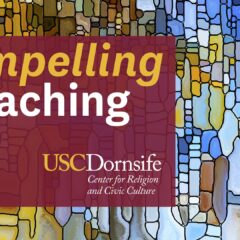This post originally appeared on Trans-Missions, the USC Knight Chair in Media and Religion site.
It’s about that time again.
Not for a new social-protest movement to pop up, or for someone to remember that the Latter-day Saints Church has some pretty important politicos in it, or for us to belatedly acknowledge black contributions to our culture (the new MLK memorial on the National Mall, highlighting the work of our most significant public theologian, is also the first such monument to an African-American). Nope, it’s time for doomsday a la Harold Camping, part deux.
Camping’s last prediction about the end of the world was widely reported in May, and he’s back again with a “no really this time, it’s all going to end” angle on October 21. The story goes that Camping was right–the Son of God did return on May 21–but his interpretation of events surrounding that return took the warnings in the Book of Revelation too literally. The opening act of the End Times was stealthy rather than spectacular, with the real fireworks happening 153 days later.
The second time around it’s even easier to poke fun at the man, the message and the missing messiah. But there are still interesting and even important stories to be mined about why the prophesy-and-apocalypse narrative captivates, time and time again.
Brie Loskota is the former executive director (2016-2021) of the USC Center for Religion and Civil Culture.







